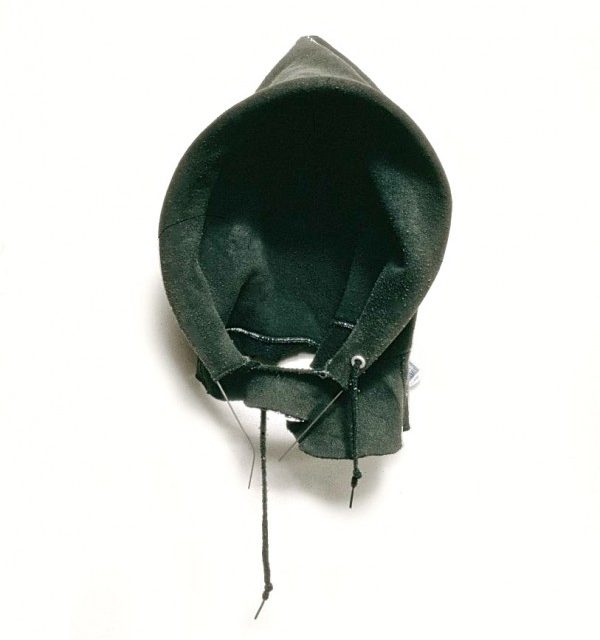Gamestorming your hybrid projects

In the mindfullness/meditation workshop on Wednesday, Kristen Eshleman guided us through some “gamestorming” exercises that might be helpful for you as you dig into your hybrid projects. Gamestorming is a “set of tools for rule breakers, innovators and changemakers” developed to stimulate creative problem-solving in the business world. The principles and practices can also be applied to the academic world. We’ve actually been using this process in the development of the hybrid… Read More
The Artist Under the Hood

In class we discussed the provocative and disturbing sculpture on the cover of Claudia Rankine’s Citizen. In Citizen Rankine creates a sense of disconnect between white readers and the stories she tells with authoritative use the second person. Hammons, like Rankine, creates a similar disconnect in his artwork. In his latest exhibition, “David Hammons: Five Decades,” disconnection and incongruity are everywhere. Hammons is very particular about his exhibitions; everything has a place… Read More
Line by Line- New Criticism and Word Art

In the Citizen Hack assignment, many of us found unique ways to do close reading and annotations of Claudia Rankine’s Citizen. Some of us used traditional annotation methods while others incorporated quotes and excerpts from other sources, created erasure poems with the text, framed the text with images of our own, or super imposed our own words on top of Rankine’s. As it turns out, we aren’t the only ones using word… Read More
How it all fits together

In your midterm evaluations, some of you raised questions about how the different units of the course fit together. We can certainly do more to highlight the connections during the second half of the semester. I also thought it might help to offer a narrative explaining the logic behind the Calendar. My hope is that when you read this “story,” you’ll gain a clearer “picture” of how I plotted the course design… Read More
Which came first? The word or the image?

What is the difference between writing and illustrating? The NY Times Book Review has authors write short pieces reflecting on their work. This Sunday I read the “Author’s Note” by Edward Carey, an English writer and illustrator. His note, “Drawing Inspiration,” is very interesting, and I have copied a few excerpts below… “I can’t imagine working any other way. I don’t draw at first to create a work of art — I’m drawing… Read More
Relations between Words & Images

Thanks, Graham, for your expert sketch-noting about the possible relationships between words & images. If anyone took notes of our definitions of “word” and “image,” please take a photo of your notes and add it to this post, or transcribe the notes here. Here are the definitions I came up with, but you had good additions, elaborations, and complications: WORDS: Units of characters that operate in verbal language system to convey meaning;… Read More
Facebook “Reactions”

In their partner project “What emotions do these represent?”, Jane and Cordelia raised some interpretive issues surrounding popular emoji’s. Last week, Facebook released an updated version of the “Like” button to include “Reactions.” Like emoji’s these also raise similar interpretative questions. In Emily Dreyfuss’s article “Linguists Not Exactly Wow about Facebook’s New Reactions” explains some of the problems with this new form of expression. Like emojis, this simple system is not flexible… Read More
Continuing the Conversation: Erasure Art

In Florence this past semester, I took Intermediate Painting: Special Topics. Each semester, our professor chooses a different theme for her students to focus on. Our theme was Sacred and Profane Art, paired with the Palazzo Strozzi’s Divine Beauty Exhibition. We also worked directly with Palazzo Strozzi’s Educational Department and their student exhibition: “Holy! Holy! Holy!” For my project, I turned to the Book of Judith. I wanted to explore how sacred texts can be interpreted to fulfill… Read More
What’s Going On In This Picture?

The digital New York Times has been upping its image-text game ever since it published the groundbreaking multimedia story, “Snow Fall,” by John Branch. Incidentally, “Snow Fall” is the first digital narrative that made me believe I actually might be able to read online—really read, in the fully immersive way I get absorbed in a book. It actually made me think that a well designed digital narrative could not just be as… Read More
Remixing the Poem with Music

Thanks to someone with tastes much better than mine, I was exposed to the singer/poet Jamila Woods thanks to her work on Chance the Rapper’s song, “Sunday Candy.” Listening to Woods’ voice led me to looking up her twitter page, where I found a poem she wrote on February 19th, 2016 called “On Display.” The poem originated in Woods creating a playlist composed of female singers whose, “lyricism, style choices, political views, and…bold commitment… Read More